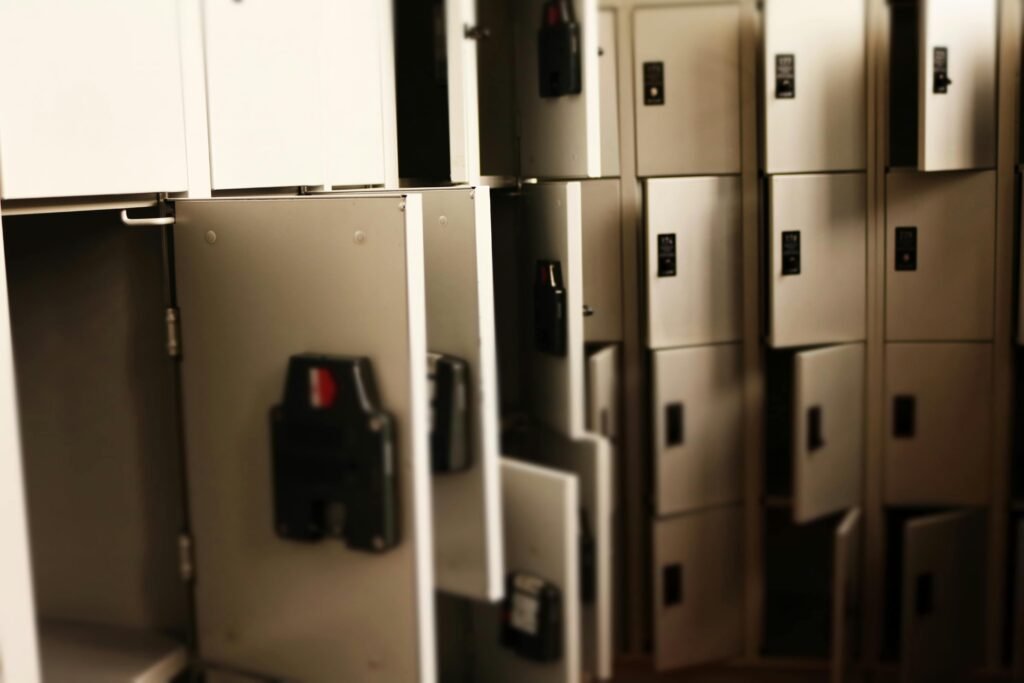Risks, Costs & Checklists
The most important decision after buying precious metals is where you’ll keep them. For most investors, the smart answer isn’t “home or vault”—it’s a calibrated mix. This guide gives you the full picture: risks, costs, access, insurance, and checklists you can implement today.
Introduction: The fundamental custody decision
Gold and silver protect purchasing power—but only if you retain them. That’s why custody is not a footnote; it’s the core of your strategy. Store at home and you gain privacy and 24/7 access, but you shoulder physical risk and need to design your own security stack (safe, alarms, procedures). Store in a professional vault and you outsource risk to a specialist (security, chain of custody, insurance)—but you accept fees, KYC, and access windows.
This guide breaks down both routes with side-by-side comparisons, realistic cost models, and field-tested checklists. Wherever you land, you’ll do it with eyes open—and a plan you can defend.
Related deep dives:
• Complete Custody Guide
• Insurance for Precious Metals
Home storage: complete analysis
Advantages: immediate access, no ongoing fees, privacy
- Instant liquidity for emergencies—no tickets, no courier, no cut-off times.
- Maximum privacy if you control your OPSEC: no KYC file, no third-party records of your holdings.
- Front-loaded costs (safe + install) with near-zero recurring fees if you self-insure (not recommended at size).
Disadvantages: theft risk, fire/flood damage, insurance limits
- Theft is localized but real—one burglary can zero your allocation.
- Base homeowner’s policies often cap “precious metals” at $1–2k; riders add cost and paperwork.
- Fire/flood and water from firefighting destroy coins, blister packs, and paper documentation.
Who it’s best for: <$25k holdings, gun owners, prepared individuals
- Small, starter positions or a defined “emergency access” sleeve (e.g., 3–10 oz gold).
- Owners willing to invest in rated safes (see below), layered security, and strict OPSEC.
- Rural properties with dogs, cameras, neighbors/response—or households trained for force-on-force defense (where legal).
Vault storage: complete analysis
Advantages: professional security, full insurance, audit trail
- Industrial-grade physical and procedural controls; third-party audits; insured under all-risk policies.
- Allocated/segregated options: your specific bars/coins, not just a ledger claim.
- Paper trail that simplifies insurance and estate handling.
Disadvantages: access limitations, ongoing costs, counterparty risk
- Business hours/appointments; same-day access possible, but not 3 a.m.
- Annual fees (usually a % of value or a minimum); KYC and ongoing compliance.
- Counterparty/ jurisdiction risk (mitigated by selecting top-tier providers and stable legal systems).
Who it’s best for: > $50k holdings, international travelers, risk-averse
- Investors with five-figure+ positions who want insured custody.
- Nomads/expats who move often and can’t secure a stable home base.
- Estates where documentation and access for heirs matter.
Vault operator examples (illustrative, not endorsements): Brink’s, Loomis, Malca-Amit, IDS/Delaware Depository, The Safe House (Singapore), Royal Mint Vault (UK).
Security risk comparison
Home theft statistics and trends
Residential theft remains opportunistic: most incidents are short, smash-and-grab entries that target visible valuables and light safes. The primary defense is layering: delay + detection + deterrence.
Vault breach incidents (extremely rare)
Modern high-security vaults have vanishingly low loss histories relative to assets under custody. The real vector is procedural: misallocation or internal compromise—addressed via segregation and independent audits.
Inside job risks (both scenarios)
- Home: contractors, guests, loose talk; social media leaks.
- Vault: staff collusion (mitigated by dual-control, video, audit, insurance).
Natural disaster vulnerability
- Home: fire, flood, tornado/hurricane zones—choose fire-rated safes and elevated placements.
- Vault: facilities are typically flood-mapped, fire-separated, with redundant power/communications.
Government confiscation concerns (realistic assessment)
Confiscation is a low-probability, high-impact fear. In liberal democracies, outright confiscation is historically rare; reporting/tax compliance is far more likely. If this risk keeps you awake, geographic diversification (e.g., partial holdings in Switzerland/Singapore) is the practical hedge—not burying coins in the yard.
Home storage security best practices
Safe selection (TL-15, TL-30, TXTL-60 ratings)
- Choose UL-rated burglary safes:
- TL-15: resists common tool attacks ≥ 15 minutes.
- TL-30 / TL-30×6: resists tool attacks ≥ 30 minutes (×6 = all sides).
- TXTL-60: includes torch and explosives resistance.
- European equivalents: EN 1143-1 Grade III–VI for serious protection.
- Add fire rating (≥ 60–120 minutes) for document survival.
Bolt-down installation requirements
- Bolt to concrete with shear-resistant anchors; avoid wood flooring.
- Reinforce slab if necessary; conceal anchor access.
Hidden vs obvious placement
- Concealment buys time: behind built-ins, under stairs, false walls.
- Avoid bedrooms and master closets (first places burglars go).
- Consider two safes: one decoy with nominal valuables; the real one elsewhere.
Layered security (alarm, cameras, physical barriers)
- Monitored alarm with glass-break + motion sensors; cellular backup.
- Cameras covering approach routes, safe room entry, and exterior.
- Door hardening (steel strike plates, longer screws), window film, fencing, dogs.
Decoy safes and misdirection
- Use a cheap safe in an obvious location as a sacrificial target.
- Stash dummy valuables (nothing serious) to end the attack quickly.
Never telling anyone (OpSec)
- Don’t brag. Don’t post. Don’t even hint.
- Limit knowledge to one trusted person for emergencies (store location in sealed letter or encrypted file).
Vault storage verification
Allocated vs unallocated (allocated is true ownership)
- Allocated: specific, identifiable bars/coins are yours.
- Unallocated: a claim on a pool—cheaper, but counterparty exposure.
Segregated storage (your metals, separate from others)
- Segregated means your items sit in their own bin with your name/account—not commingled.
Third-party audits (what to look for)
- Independent, regular audits with published reports.
- Ability to cross-check serials against your statements.
Insurance coverage verification
- Ask for a certificate of insurance naming the vault/operator; confirm “all-risk”, limits, territory, in-transit cover (if using armored logistics).
- Even the best vault plan is incomplete without coverage terms you understand.
Visiting and inspecting your holdings
- Can you view/verify on-site by appointment?
- Is photo/video verification available?
- What’s the withdrawal/ship-out process and timeline?
Cost comparison over time
Assumptions (illustrative)
- Home: TL-30 safe $2,500, install $400; rider insurance 0.6–1.0%/yr of value.
- Vault: storage+insurance 0.45–0.90%/yr (min fees apply), $100 setup.
Your quotes will vary. Always request written fee schedules.
10-year total cost table (illustrative)
| Portfolio Size | Home (safe+install + rider/10y) | Vault (fees/10y + setup) | Indicative Winner |
|---|---|---|---|
| $25,000 | $2,900 + (1.0% × $25k × 10 = $2,500) = $5,400 | Max(min $500/yr, 0.8%) → $500 × 10 + $100 = $5,100 | Tie / Slight vault edge |
| $50,000 | $2,900 + (0.8% × $50k × 10 = $4,000) = $6,900 | 0.7% × $50k × 10 + $100 = $3,600 | Vault |
| $100,000 | $2,900 + (0.6% × $100k × 10 = $6,000) = $8,900 | 0.6% × $100k × 10 + $100 = $6,100 | Vault |
| $300,000 | $4,600 (bigger safe) + (0.5% × $300k × 10 = $15,000) = $19,600 | 0.45% × $300k × 10 + $100 = $13,600 | Vault |
Break-even often sits around $40–70k depending on your safe choice, insurance rate, and vault minimums. If you self-insure at home (risky), the home column drops—but so does your sleep.
Storage location can influence tax treatment and paperwork.
Access and liquidity
Home: 24/7 access
- Immediate during bank holidays, flight days, and weekend emergencies.
- Your challenge: secure access without telegraphing the stash to others in the household or building.
Vault: Business hours, appointment-based
- Standard is same-day or next-day by appointment; remote sell/ship via dealer networks often same-day instruction.
- Factor cut-offs for wires/couriers.
Emergency access scenarios
- Home wins for sudden medical bills, evacuation cash, or card freezes.
- Vault wins when your home is compromised (fire, burglary) or you’re abroad.
Heir/executor access planning
- Home: executor must find and open the safe (leave sealed instructions + keys/combination logic).
- Vault: add authorized persons, keep estate docs on file.
Insurance deep dive
Homeowner’s policy limits (usually $1–2k max)
Base policies often don’t cover bullion beyond token limits. Expect to schedule items or buy a specialist policy for real protection.
Rider costs for home storage
0.6–1.5%/yr of insured value is common, with requirements for rated safes and monitored alarms.
Vault insurance (typically Lloyd’s, full coverage)
Professional vaults include all-risk coverage for metals in custody; clarify in-transit terms if you plan to ship or withdraw.
Claims process comparison
- Home: police report, proof of ownership, adjuster, potential valuation disputes.
- Vault: operator + insurer handle the incident; you provide account statements.
Privacy considerations
Home storage: maximum privacy
If nobody knows, nobody knows. But remember: delivery drivers, contractors, roommates—each is a privacy leak.
Vault storage: KYC documentation required
Expect ID, address, source-of-funds at reputable depositories. For some jurisdictions, external reporting may apply.
Reporting implications (e.g., US FBAR for foreign vaults)
Depending on structure (financial account vs non-financial storage), reporting may apply. Consult a cross-border tax professional if you’re a US person or multi-resident.
Estate planning disclosure
Whichever route, document what exists, where it is, and how to access it—securely.
Hybrid approach: best of both
Core holding in vault, liquidity reserve at home
- Example split: 80–90% in allocated, segregated vaults; 10–20% at home for emergencies.
Geographic diversification (home + foreign vault)
- Combine a domestic vault for convenience with an international vault (e.g., Zurich, Singapore) for political/jurisdictional diversification.
Asset type split (bullion in vault, junk silver at home)
- Keep compact, high-value gold at home; place bulky silver in vault to avoid storage/weight issues.
Percentage allocations for different scenarios
- City apartment: 90% vault / 10% home.
- Suburban house with safe room: 70% vault / 30% home.
- Frequent traveler: 95% vault / 5% home (plus cash buffer).
Real-world case studies
Home storage success story
A couple installed a TL-30×6 safe, bolted to slab, with monitored alarm. During a neighborhood burglary wave, their home was hit; thieves fled when the alarm tripped and couldn’t budge the safe. Loss: $0 (minor damage).
Home storage disaster (theft, fire)
A small fire triggered sprinklers; unprotected tubes of coins suffered water + smoke damage. Insurance sublimit paid $2,000; actual loss >$30,000. Documentation was thin; claims dragged.
Vault storage peace of mind
A retiree relocated abroad; metals in segregated Zurich storage with remote sell instructions. When medical bills spiked, he sold 15 oz same day and received SWIFT funds next day—no travel, no risk.
Vault storage access frustration
An investor planned to gift coins at a weekend event. Vault required 48 hours notice for retrieval; timing slipped and the plan changed. Solution going forward: a home “gift sleeve” of 5–10 oz.
Decision framework
Questionnaire: answer these to determine best option
- Holding size now/soon? (<$25k, $25–100k, $100k+)
- Residence stability? (house vs short-term rentals)
- Risk tolerance? (theft, fire, jurisdiction)
- Access needs? (weekly, quarterly, emergencies only)
- Documentation comfort? (KYC vs privacy)
- Heirs/executors? (who, how, where)
- Budget for security? (safe class, alarms, vault fees)
Decision tree flow (text version)
- If >$50k & you travel or rent → Vault-first + small home sleeve.
- If <$25k & stable house with safe → Home-first, plan to add vault at $50k.
- If privacy is priority but you want insurance → Hybrid with allocated, segregated vault offshore + minimal home.
Situation-specific recommendations
- Nomad: 95% vault (Singapore/Zurich/London) + 1–3 oz at home base.
- Family home: 70% vault + 30% home in TL-30 safe, strong OPSEC.
- High-net-worth: multi-vault geographic split + formal estate instructions.
Checklists
Home storage security checklist (20+ items)
- Choose UL TL-rated safe (TL-15 minimum; TL-30/TL-30×6 ideal).
- Add ≥ 60–120 min fire rating.
- Bolt to concrete with shear-resistant anchors.
- Conceal location (false wall, built-in, under stairs).
- Install monitored alarm with cellular backup.
- Add glass-break + motion sensors and door contacts.
- Exterior cameras covering approaches; DVR in a separate location.
- Harden doors/windows (plates, long screws, security film).
- Keep decoy safe with nominal items.
- Maintain strict OPSEC (no social posts, no bragging).
- Use unbranded packaging for deliveries.
- Store documentation (receipts, serials) off-site/encrypted.
- Maintain fire extinguisher near safe area.
- Use desiccant inside safe; avoid humidity.
- Keep insurance rider current; update values annually.
- Train household on alarm procedures.
- Vet contractors; limit access to safe area.
- Rotate routes/times when accessing the safe.
- Set up an emergency contact with sealed instructions.
- Conduct annual security review and drill.
- For apartments: place safe on load-bearing wall/concrete.
Vault selection due diligence checklist
- Allocated? Segregated? Yes/No.
- Jurisdiction (legal stability, property rights).
- Insurance certificate wording (all-risk, limits, transit).
- Audit frequency and independent auditor name.
- Access process (appointments, viewing, withdrawal).
- Fee schedule (tiered %, minimums, pick/pack, withdrawal).
- Operator pedigree (years, references, parent company).
- Disaster recovery plan and data redundancy.
- Buy/sell network (can you sell quickly from storage?).
- Heir authorization procedures.
Annual review checklist (both options)
- Reconcile inventory vs statements (serials, counts).
- Update insurance values and riders.
- Test alarm/cameras, replace batteries.
- Refresh OPSEC (who knows what, new risks).
- Review estate docs and authorized persons.
- Re-run cost vs benefit (fees, storage split) and rebalance.
No one-size-fits-all answer
The custody decision is a portfolio decision. Home storage maximizes privacy and immediacy but demands serious security discipline. Vault storage buys professional security and insurance at the price of fees and formalities. Most investors win with a hybrid: core ounces allocated & segregated in a top-tier vault, and a small, well-protected home sleeve for true emergencies.
Pick your mix, document it, and run the checklists. Your metals will finally do the job you bought them for: reduce risk, not add it.
If home/vault isn’t feasible, explore portable asset mixes.



